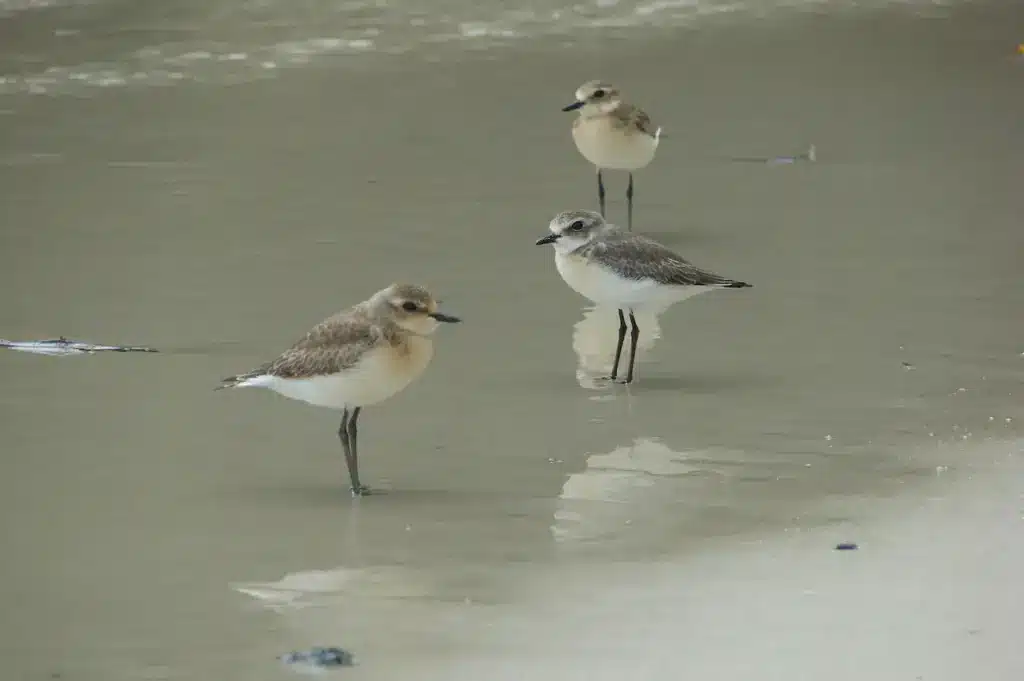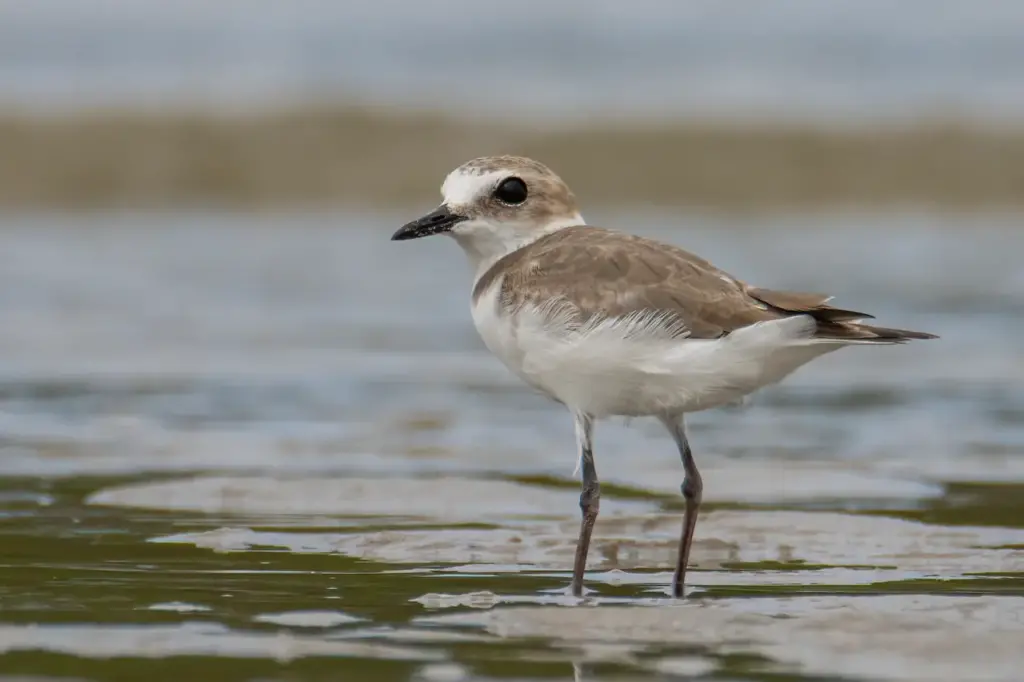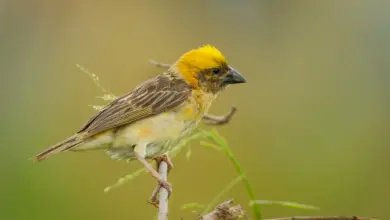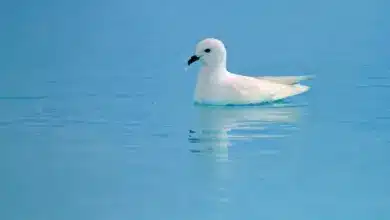Its scientific name commemorates the French botanist Jean Baptiste Leschenault de la Tour.
The Greater Sand Plovers is one of the species to which the Agreement on the Conservation of African-Eurasian Migratory Waterbirds (AEWA) applies.

Distribution / Range
It breeds in the semi-deserts of Turkey and eastwards through central Asia. It nests in a bare ground scrape. This species is strongly migratory, wintering on sandy beaches in East Africa, South Asia, and Australasia. It is a rare vagrant in Western Europe, where it has been recorded as far west as Great Britain and France.
Description
This chunky plover is long-legged and thick-billed.
Breeding males have grey backs and white underparts. The breast, forehead, and nape are chestnut, and there is a black eye mask.
The female is duller, and winter and juvenile birds lack the chestnut, apart from a hint of rufous on the head. The legs are greenish and the bill black.
In all plumages, it is very similar to Lesser Sand Plover, Charadrius mongolus. Separating the species may be straightforward in mixed wintering flocks on an Indian beach, where the difference in size and structure is obvious; it is another thing altogether to identify a lone vagrant in Western Europe, where both species are very rare. The problem is compounded in that the Middle Eastern race of the greater sand plover is the most similar to the lesser species.

Diet / Feeding
Its food consists of insects, crustaceans, and annelid worms, which are obtained by a run-and-pause technique, rather than the steady probing of some other wader groups.
Calls / Vocalization
Its flight call is a soft trill.
Copyright: Wikipedia. This article is licensed under the GNU Free Documentation License. It uses material from Wikipedia.org … Additional information and photos added by Avianweb.
Please Note: The articles or images on this page are the sole property of the authors or photographers. Please contact them directly concerning any copyright or licensing questions. Thank you.





